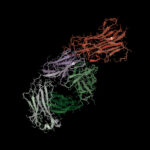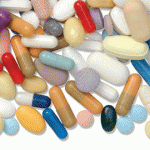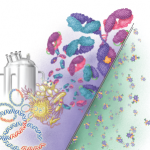 Biologics have been hailed by the American College of Rheumatology (ACR) as a “remarkable public health victory.” But if patients don’t have access to a treatment that has cut the rheumatoid arthritis (RA) progression rate in half since 1990, then what good is it?
Biologics have been hailed by the American College of Rheumatology (ACR) as a “remarkable public health victory.” But if patients don’t have access to a treatment that has cut the rheumatoid arthritis (RA) progression rate in half since 1990, then what good is it?
That’s one reason why Angus Worthing, MD, FACP, FACR, and the incoming chair of ACR’s Government Affairs Committee, says the ACR is fighting a proposed demonstration project from the Centers for Medicare & Medicaid Services (CMS) that would change how Medicare Part B pays rheumatologists and others for medication. Typically, the payment is the average sales price of a drug plus a 6% add-on. The demonstration project would “test whether changing the add-on payment to 2.5% plus a flat-fee payment of $16.80 per drug per day changes prescribing incentives and leads to improved quality and value.”
The ACR and 315 other organizations have publicly said savings would not be achieved. And although the comment period for the new rule closed earlier this year, no decision has yet been rendered. The rule would not go into effect any sooner than 60 days after it is finalized, so a decision needs to be made in the next few weeks for the proposal to go live this year.
“We’re hoping that Medicare would decide to change this in either one of a couple of ways or not go forward with it,” says Dr. Worthing, a practicing rheumatologist in Chevy Chase, Md. “If it goes forward the way it’s proposed, we’re pretty worried about how it might reduce access to biologics given in the office.”
In lobbying CMS and members of the U.S. Congress, Dr. Worthing and the ACR suggested that the proposed rule was unnecessary.
“Given the success of the current Part B reimbursement methodology in ensuring patient access to the most appropriate treatments, it is unclear what ‘deficits in care’ CMS is attempting to address in this incredibly wide-ranging initiative,” the ACR wrote in a letter earlier this year.
Dr. Worthing says the CMS should withdraw the proposal. However, if it does move forward, the ACR has urged modifications that would blunt its impact to rank-and-file rheumatologists.
“Limiting the scope of it or changing the amount of the cut in reimbursement of medications … might help,” he says.
Among the proposed changes the ACR is endorsing would be exemptions to protect what it calls “the most vulnerable Medicare beneficiaries.” It would push to exempt physician groups of 25 or fewer professionals and exculpate physician-owned practices in rural or medically underserved areas. Dr. Worthing says the figure of 25 professionals is an educated guess on where to draw the proverbial line in the sand.
“It was difficult to come up with the exact number … [but] the groups that are generally under that size would have a lot less buying power and a lot less ability to get the drug under the average sales price in this country than groups that are bigger than that,” Dr. Worthing says.
The ACR is also pushing for exemptions based on biologics themselves. The society is pushing to exempt drugs/biologics that have no alternative with a more than 20% ASP differential and where there are less three of fewer members of the drug/biologic class.
“The biologics that we’ve got in rheumatology are all similarly very expensive, and so the way that demonstration proposes to save money is to stop incentivizing doctors to prescribe more expensive drugs,” Dr. Worthing says. “The reality for us is that we don’t have less expensive drugs.”
The Part B proposal not only covers established biologics, but will also have jurisdiction over infliximab-dyyb, the first biosimilar approved to treat RA (in combination with methotrexate), ankylosing spondylitis and psoriatic arthritis.
But biosimilars have not been the price savior rheumatologists have hoped for. Dr. Worthing says biosimilars are not expected to reduce price more than “maybe 30 to 40%. In addition to that, biologic prices seem to have risen about 30% this year. So even if biosimilars were a 30–40% discount to biologics that would just have drug pricing even with a year ago.
“While we hope for improved access because of lower price,” he says, “the price went up right before it went down and so we’re back to square one.”
Dr. Worthing’s big fear with the nascent state of biosimilars and the proposed Part B rule is that anything that limits access to “revolutionary” treatments is doing a disservice to rheumatologists and, more importantly, their patients.
“It’s one of the most difficult moments in practicing medicine … to get to a place where we’ve diagnosed a condition in a patient, we’ve figured out the right treatment for them and we’re lucky enough to have access to these revolutionary treatments but then suddenly realize that the person can’t get access to the treatment because of a systematic problem,” he says. “It’s really just heartbreaking.”
Richard Quinn is a freelance writer in New Jersey.



